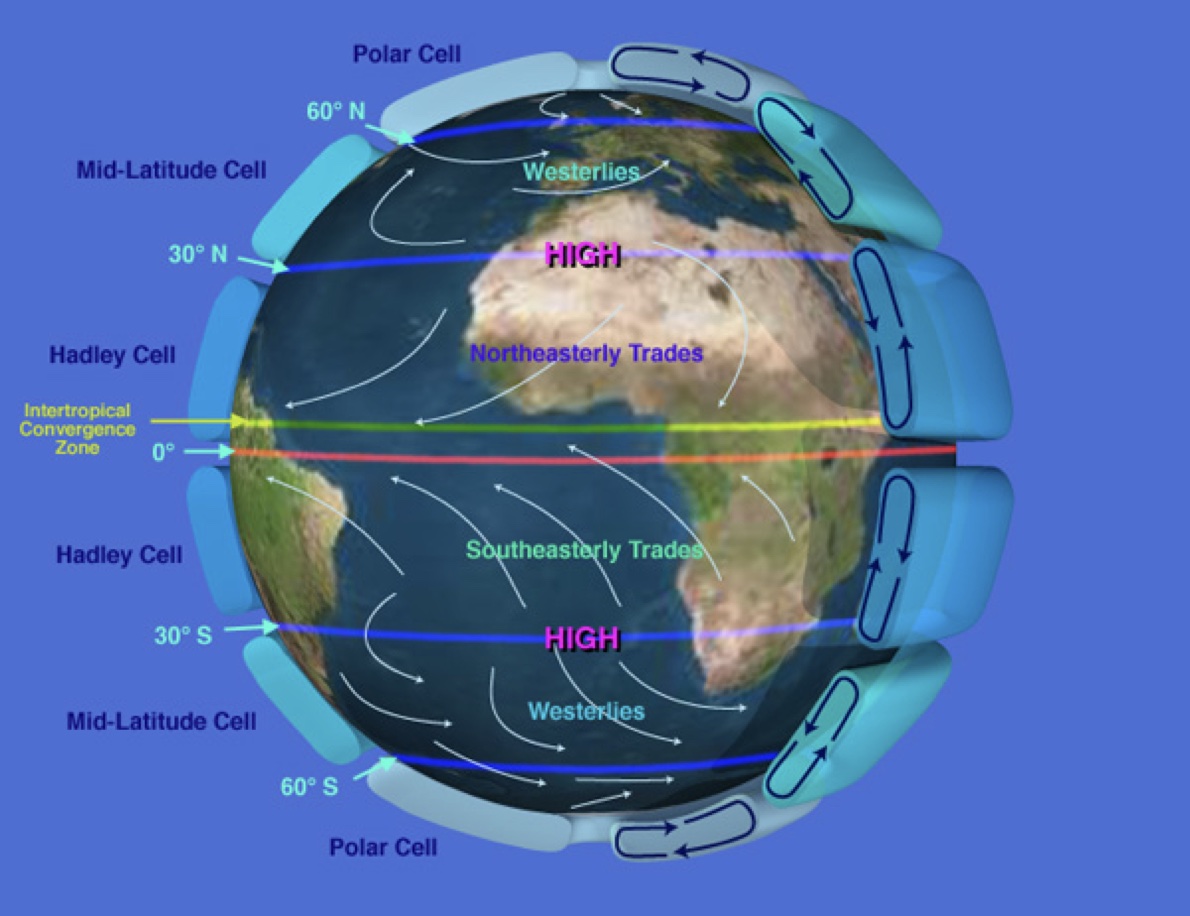1.3 Global circulation
The sun heats the earth most at the equator and least over the poles. At the equator, the heated air rises and at the poles it sinks. Rather than a single convection cell stretching from equator to pole, the atmosphere actually has 3 convection cells in each hemisphere.

The UK is situated close to the boundary between the Polar Cell and the Mid-Latitude cell. The cold air to the north and the warmer air to the south tend not to mix. They interface at a boundary known as the polar front. This boundary moves around, tending to be further south in the winter and further north in the summer.
Very fast high level winds form above the polar front. These winds, known as the jet stream, blow from west to east. At lower levels, winds tend to blow from the west in the mid-latitude cell and from the east in the polar cell.
Disturbances along the polar front cause the warm air from the mid-latitude cell to intrude into the colder air mass to the north. This sets up the conditions for the formation of an area of low pressure, or a depression. We’ll look at these in some detail, as they are responsible for much of the UK’s bad weather.